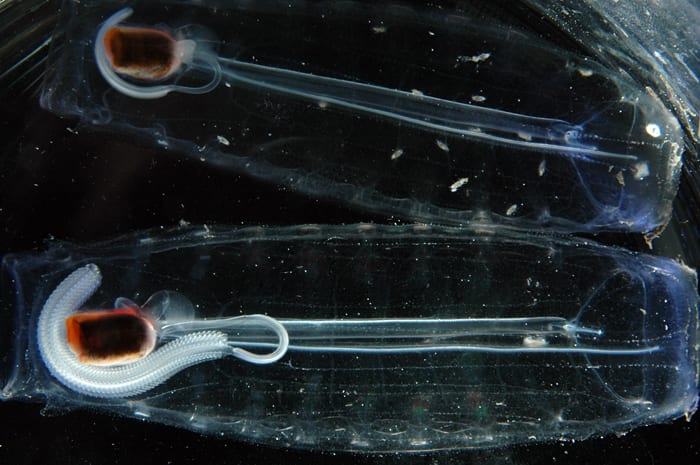Salps are seldom seen by people, but these transparent animals are abundant plankton in the open ocean, and may affect the ocean’s carbon cycle. In alternating generations salps reproduce by budding off chains of clones (aggregates), and, in the next generation, producing single embryos (solitaries) that grow up to produce aggregates again. These two solitary salps of the Southern Ocean have budded chains in different stages of growth curled around their brown stomachs (the lower salp has a more-developed chain). They swim constantly, filtering food particles from the water. In 2006 WHOI scientist Larry Madin led a cruise to study the growth of salp populations near Antarctica.(Photo by Larry Madin, Woods Hole Oceanographic Institution)
Image and Visual Licensing
WHOI copyright digital assets (stills and video) on this website can be licensed for non-commercial use upon request and approval. Please submit your request via our Media Request Form.
For assistance or accessibility accommodations, call (508) 289-2647.
